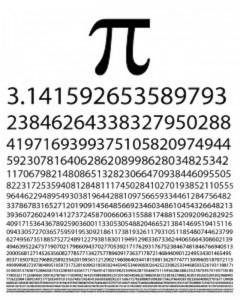Here is some sharing over a very fascinating constant ![]() . We know this is
. We know this is ![]() (up to 3 sig. fig. accuracy) or even
(up to 3 sig. fig. accuracy) or even ![]() (up to 7 sig. fig. accuracy). One of my favourite way of deriving this never-ending amazing constant is to use the Leibniz Formula.
(up to 7 sig. fig. accuracy). One of my favourite way of deriving this never-ending amazing constant is to use the Leibniz Formula.
A-level students should be able to solve it on your own. We first find the series expansion for ![]() with our MF15
with our MF15 ![]() formula.
formula.
![]()
After this, note that ![]() .
.
We can then integrate the series to find
![]()
Finally, we just need to substitute ![]() and you should find
and you should find ![]() somewhere.
somewhere.

